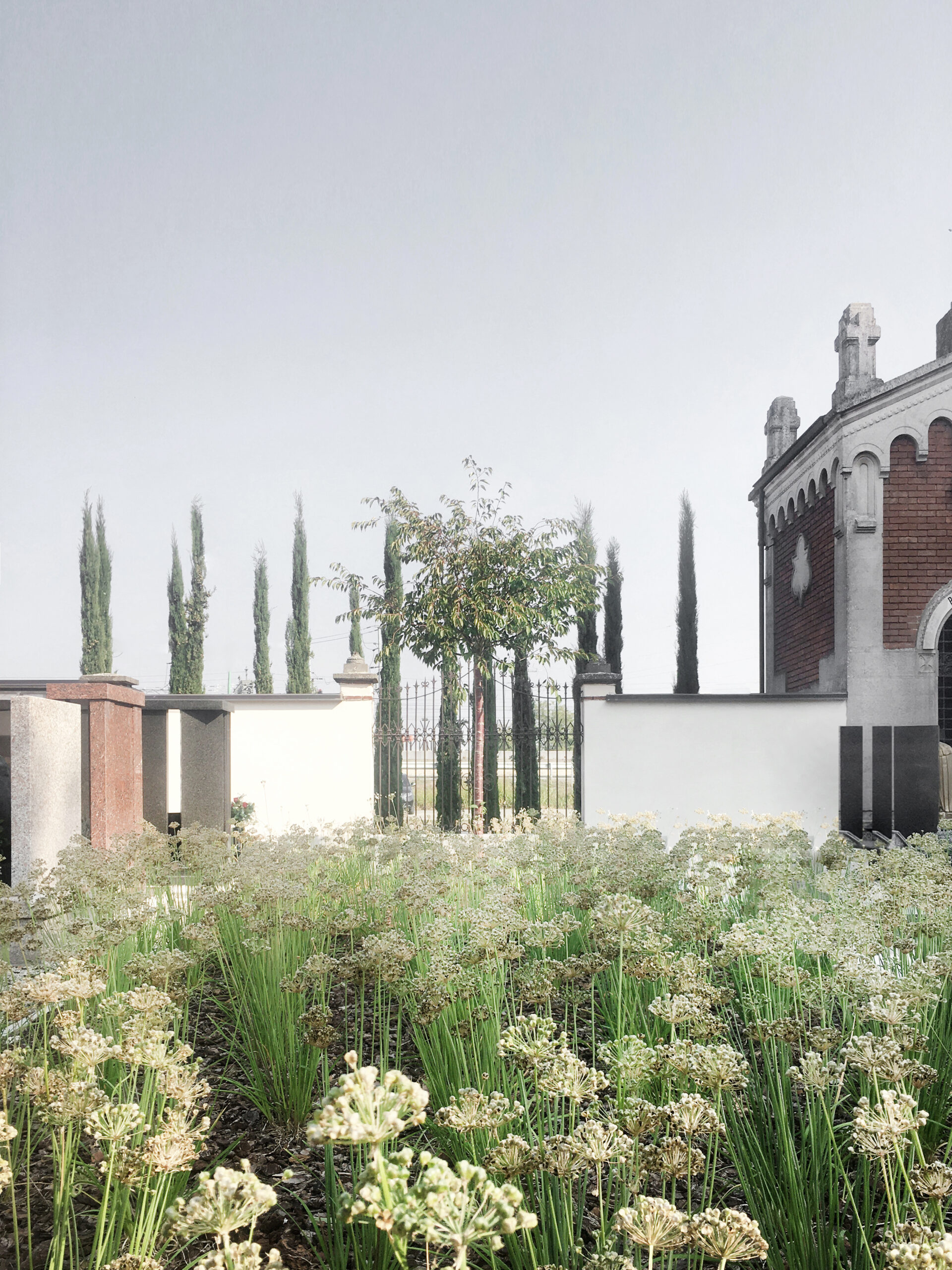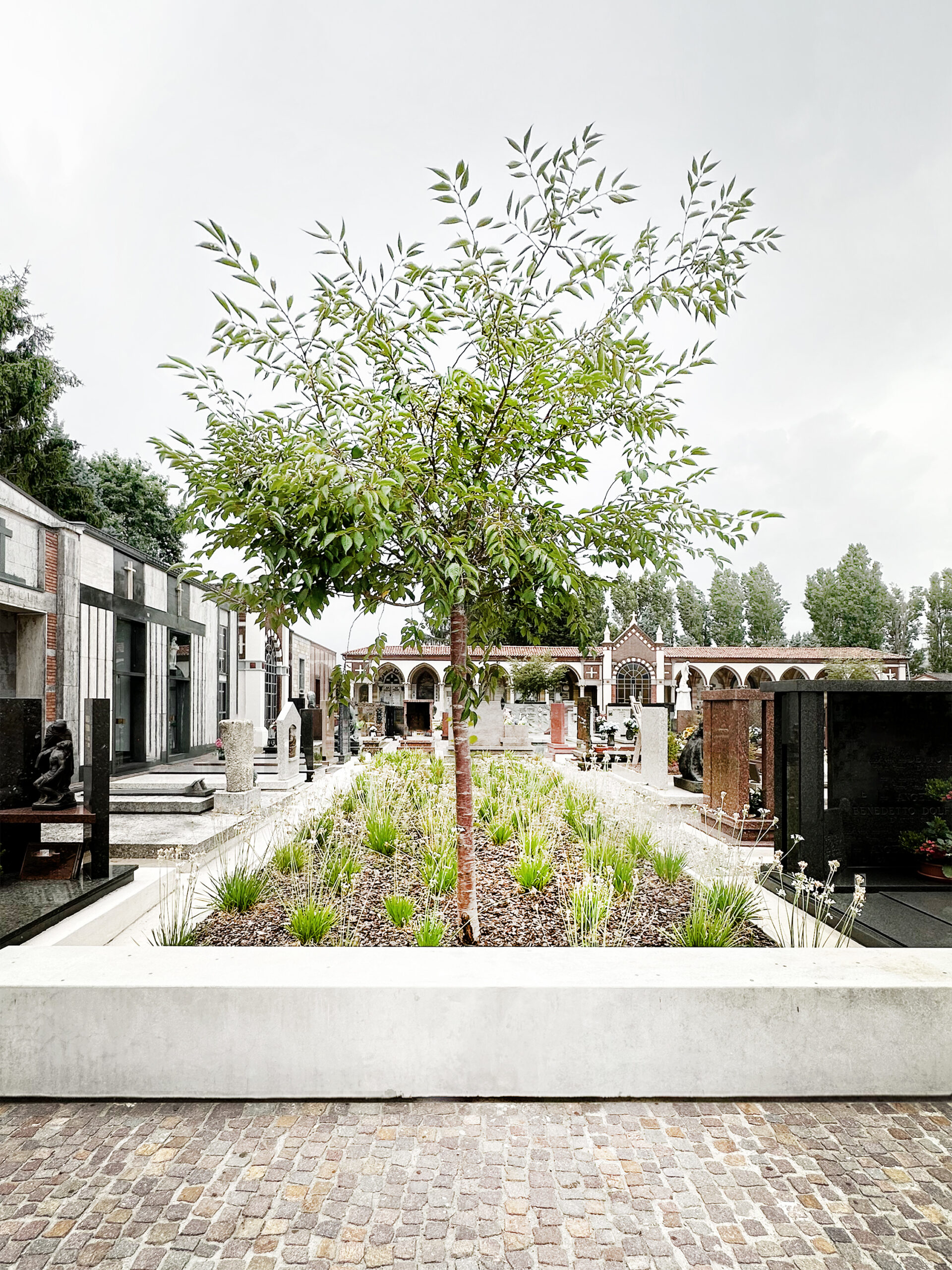The intervention consists of a series of transformations of the pedestrian soils and of the current permeable surfaces in order to generate a new system of journeys and specialized uses in conditions of public safety and in the absence of impediments and / or architectural barriers.
The creation of new continuous and perfectly flat paved surfaces, for the exclusive use of pedestrians, as well as the design of new green planted areas, will allow the definition of a new continuous safe ground suitable for free access to the cemetery appurtenances even by people with different skill or wheelchair.
A particular attention will be paid to the definition of choices oriented towards the creation of a new quality urban “landscape”, a place where memory finally finds a suitable scenario for representation, a space in which to deposit the collective sentiment with dignity.
The architectural project will pay particular attention to the selection of material kits and plant accessories in order to create an overall contemporary yet congruent environment with local construction and environmental traditions.
A system of “green infiltrations”, inserted wherever possible according to a mosaic pattern, will design a particle network of new vegetal presences with the aim of increasing the environmental, atmospheric and visual quality of the worship space, now completely mineralized and without any intervention of vegetation.
Filtering paths in light grit alternate with dirt paths and cubed porphyry fields. The latter were chosen from waste materials, to constitute vibrant and “tactile” surfaces for which the elements are all of different shapes and sizes; regularity and perfection give way to defects, to imprecision, as a metaphor for every human existence.
The new underground family tombs are designed in the form of large petrified beds, covered with natural travertine with warm colors and a soft texture. The tombs are as if they were lying on the ground, simply placed on the green surface of this large colored and scented garden.
Cypresses and cherry trees complete the landscape of memory and meditation, giving the places a character that in some ways compensates for pain and estrangement.
Chronology: 2019-2020 Project, 2021-2023 Construction
Category: Public Spaces, Cemeteries
Architectural and Landscaping Project: Tomas Ghisellini
Project Assistants: Alice Marzola, Lucrezia Alemanno
Collaborators: Daniele Francesco Petralia, Alberto Manzi
Agronomic Project Consultancy: Nicola Caffi Avogadri
Photographs: Tomas Ghisellini


















